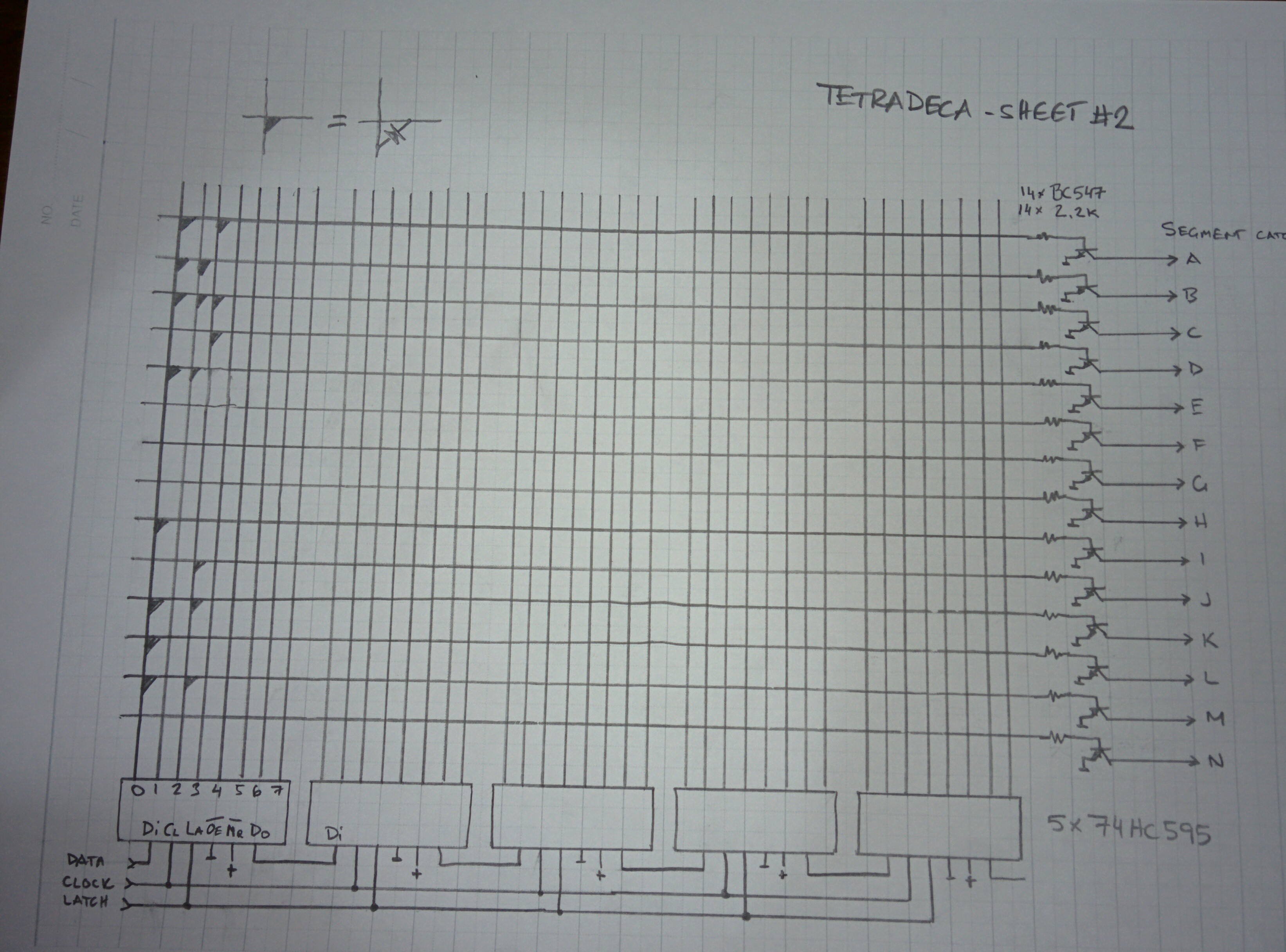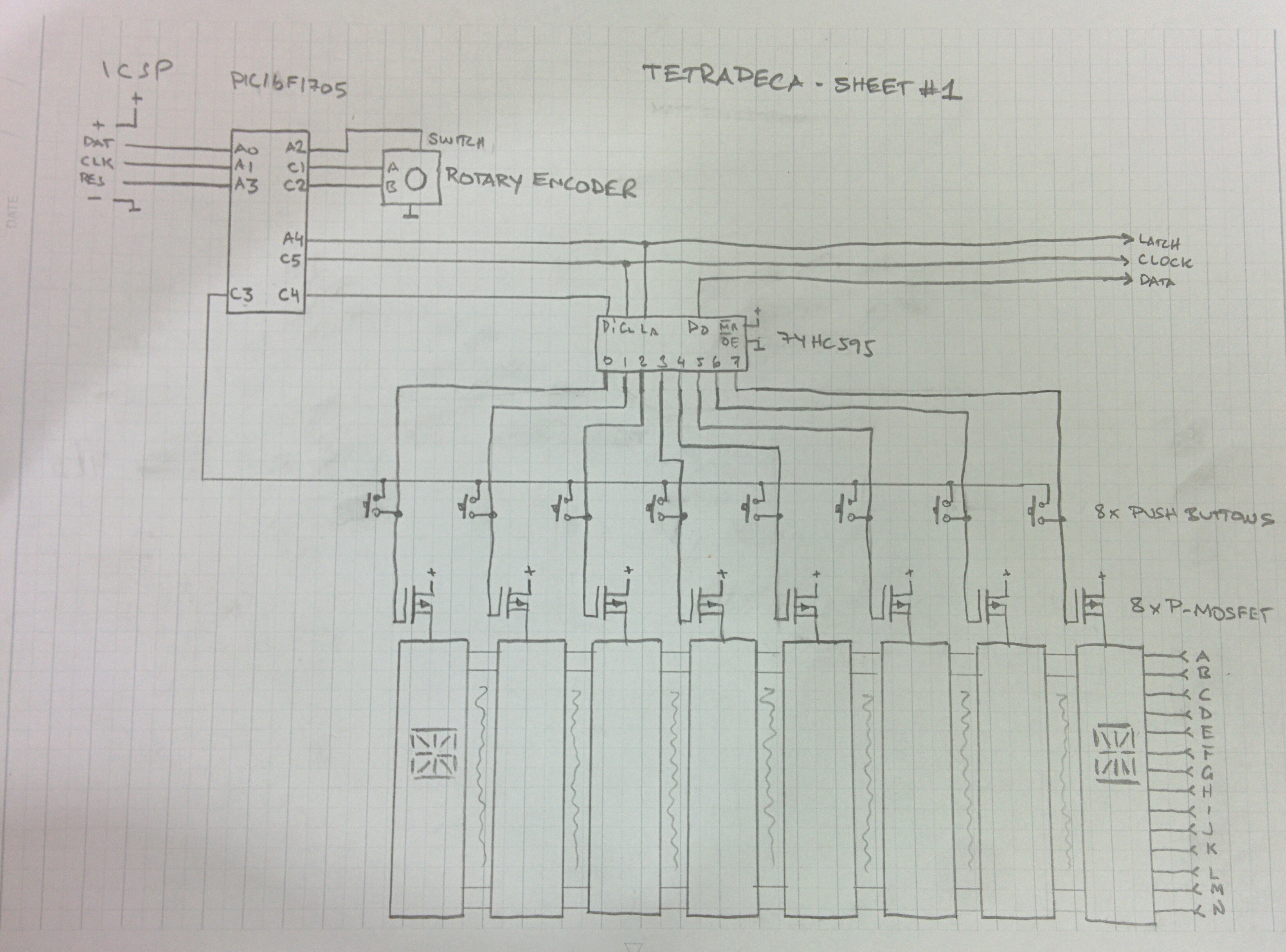Since I soldered this on perfboard instead of on a real made pcb I didn't bother to draw the schematics in a PCB CAD package. So my hand-drawn scribbles will have to do.
Only the first three characters are shown in the diode-ROM, but all of them are documented in the code.


 matseng
matseng
Discussions
Become a Hackaday.io Member
Create an account to leave a comment. Already have an account? Log In.
I see that I've forgot to add the 14 LED current limiting resistors put between the display cathodes and the collectors of the segment driver transistors to the schematics.
I do actually have 220 ohm resistors there or else the displays would be very unhappy being driven to 5 volt vcc by a p-fet and to ground via a fully saturated small signal BJT. There probably would have been 100+ mA thru each segment...
Are you sure? yes | no
heh.... strange that you haven't seen the '595 before. In almost ashamed to use it since it's by far the most commonly used ic in the "arduino maker" community. ;-)
I'm doing basically that. But I've set the /OE permanently low (active) so they are always outputting data. But the outputs doesn't update until the latch signal gets a rising edge.
My original plan was to use 3-to-8 decoders, but the only ones I would locally was the '138 with inverted outputs, and that won't work unless I use Schottky's or the transistors will never be fully turned off making all segments glow faintly all the time.
Are you sure? yes | no
That made me laugh. Glad I'm not the only one with a '595 aversion ;)
Are you sure? yes | no
I'm from the pre-arduino/maker CD4017 days of simple port-expansion. I even got a tube of those new-fangled 74HC4017's which go faster :) If you use one of those, it's shameful *and* it gives away your age :-)
I always get stumped by the '138, too, unless it's used for an active low line (like inverted 3-state output enables for addressing things onto a bus).
Are you sure? yes | no
Hmmm. I hadn't seen the 74HC595 before. Interesting part. You shift in a single high-bit to activate one of the columns, and only enable the output when the bit gets to the correct position?
Are you sure? yes | no